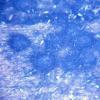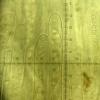
24-12-2025 17:08
Hulda Caroline HolteHello, I have found this propoloid ascomycete on

21-12-2025 09:32
Hello.A tiny ascomycete found embedded in wood in

21-12-2025 21:32
Pol DebaenstHello, Garden, Burgweg 19, Veurne, BelgiumOn 10/1

22-12-2025 23:38
Patrice TANCHAUDBonsoir, récolte sur un mur en pierre, apothéci

22-12-2025 00:47
Patrice TANCHAUDBonsoir, récolte à proximité du milieu dunaire
Herpotrichia?
Bernard Declercq,
05-01-2014 22:11
 Hi to everyone,
Hi to everyone,Collected last week on decorticated branch of Betula pendula, in company of Chaetosphaeria pulviscula and Ascocoryne inflata: Ascomata superficial , gregarious, flattened globose, with central pore, 0,5-0,6 mm diam., 0,35-0,4 mm high, black, immersed in a dense dark brown subiculum. Asci bitunicate, 8-sp., rounded apex, arising from croziers, 113-139x11,5-12,5 µm.Paraphysoids numerous, filiform, 1,5 µm diam., anastomosing above the asci.
Peridum surface a dark brown textura angularis; subiculum composed of dark brown 4-5 µm diam. hyphae.
Could this be Herpotrichia alligata?
Best regards,
Bernard
Alain GARDIENNET,
06-01-2014 13:22
Re : Herpotrichia?
Hi Bernard,
You miss ascospores in the description.
Alain
Alain GARDIENNET,
06-01-2014 13:30
Re : Herpotrichia?
H. alligata is possible. Perhaps you should look towards H. herpotrichoides too.
Alain
Bernard Declercq,
06-01-2014 14:49

Re : Herpotrichia?
Bonjour Alain,
Ah, oui .... les voici : "Spores fusoid, 17,5-21x6-6,5(7) µm, 1-septate, strongly constricted, smooth, hyaline, with (1)2 large LBs per cell (measured within the asci). "
J'ai donc pas vu des spores mûres ce qui rend la tâche bien difficile.
Mais en effet, ta proposition pourrait mieux convenir. J'ai bien observé la pore centrale des ascômes, ce qui serait caractéristique selon Mme Barr et il faut mieux être prudent avec l'introduction de noms d'espèces étranges à notre continent.
Merci pour ton avis.
Bernard
Ah, oui .... les voici : "Spores fusoid, 17,5-21x6-6,5(7) µm, 1-septate, strongly constricted, smooth, hyaline, with (1)2 large LBs per cell (measured within the asci). "
J'ai donc pas vu des spores mûres ce qui rend la tâche bien difficile.
Mais en effet, ta proposition pourrait mieux convenir. J'ai bien observé la pore centrale des ascômes, ce qui serait caractéristique selon Mme Barr et il faut mieux être prudent avec l'introduction de noms d'espèces étranges à notre continent.
Merci pour ton avis.
Bernard

